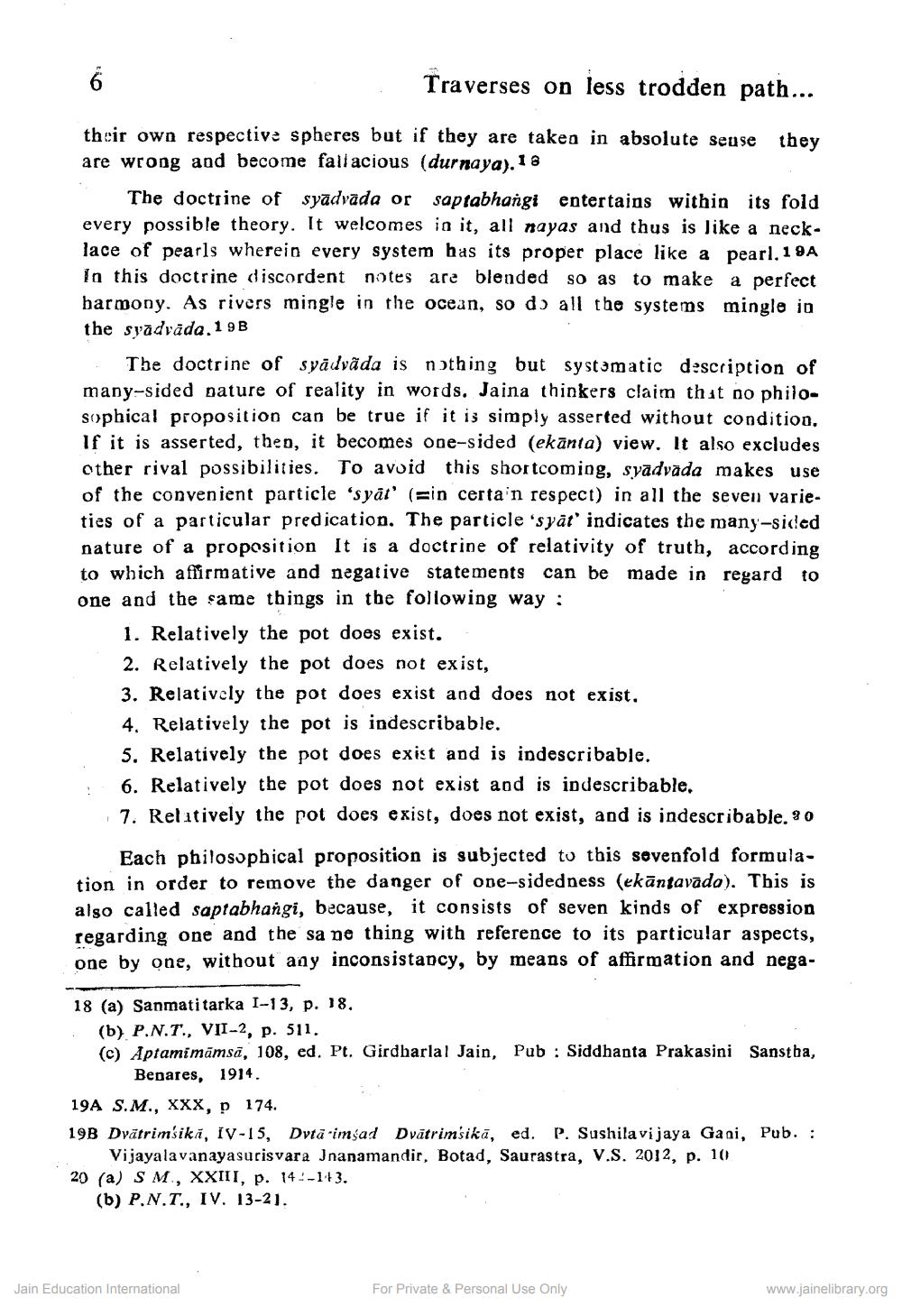________________
Traverses on less trodden path...
their own respective spheres but if they are taken in absolute seuse are wrong and become fallacious (durnaya). 18
they
The doctrine of syadvada or saprabhangi entertains within its fold every possible theory. It welcomes in it, all nayas and thus is like a necklace of pearls wherein every system has its proper place like a pearl, 19A in this doctrine discordent notes are blended so as to make a perfect harmony. As rivers mingle in the ocean, so d) all the systems mingle in the syadvāda, 19B
The doctrine of syādväda is nothing but systematic description of many-sided nature of reality in words. Jaina thinkers claim that no philosophical proposition can be true if it is simply asserted without condition, If it is asserted, then, it becomes one-sided (ekānta) view. It also excludes other rival possibilities. To avoid this shortcoming, syadvada makes use of the convenient particle 'syat' (=in certain respect) in all the seven varieties of a particular predication. The particle 'syat' indicates the many-sided nature of a proposition It is a doctrine of relativity of truth, according to which affirmative and negative statements can be made in regard to one and the same things in the following way :
1. Relatively the pot does exist. 2. Relatively the pot does not exist, 3. Relatively the pot does exist and does not exist, 4. Relatively the pot is indescribable. 5. Relatively the pot does exist and is indescribable. 6. Relatively the pot does not exist and is indescribable. 7. Relatively the pot does exist, does not exist, and is indescribable. 80
Each philosophical proposition is subjected to this sevenfold formulation in order to remove the danger of one-sidedness (ekāntavada). This is also called saptabhangi, because, it consists of seven kinds of expression regarding one and the sa ne thing with reference to its particular aspects, one by one, without any inconsistancy, by means of affirmation and nega
18 (a) Sanmatitarka 1-13, p. 18.
(b) P.N.T., VII-2, p. 511, (c) Aptamimāmsā, 108, ed. Pt. Girdharlal Jain, Pub : Siddhanta Prakasini Sanstba,
Benares, 1914. 19A S.M., XXX, p 174. 19B Dvätrimsiki, IV-15, Dytā imsad Dvātrimsikā, ed. P. Sushila vijaya Gani, Pub. :
Vijayalavanayasurisvara Jnanamandir, Botad, Saurastra, V.S. 2012, p. 10 20 (a) SM, XXIII, p. 14.-143.
(b) P.N.T., IV. 13-2).
Jain Education International
For Private & Personal Use Only
www.jainelibrary.org




